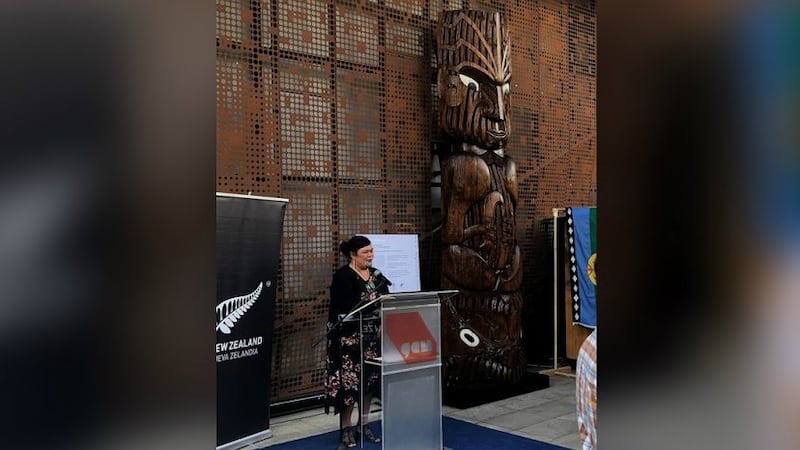PHOTO/SUPPLIED
Māori Development Minister Nanaia Mahuta led a ceremonial naming and gifting of a carved pou whakairo at the Centro Cultural Gabriela Mistral in Santiago, Chile today.
“This pou is a response to this specific site and its history, reflecting challenges of the past and symbolising aspirations for the future,” said Mahuta.
Master carver James Rickard (Ngāti Porou, Tainui) and Karaitiana Rurehe (Ngāi Tūhoe) from the New Zealand Māori Arts and Crafts Institute both worked on the pou. Rickard travelled to Santiago for the ceremony.
“The pou whakairo has been named Ngā Morehu – those who remain. Our peoples share an incredible past, one that we can all be proud of. Today we continue that proud tradition,” said ;Mahuta.
The minister, who is in Chile to promote diplomatic, cultural and business relationships, said the visit provides a unique opportunity to share the experience and value of Māori economic and social development and promote links between Aotearoa and Chile on indigenous issues.
“It’s great to be here to build and foster a relationship with our Chilean counterparts and share what we’ve learnt and we are doing to support indigenous development in Aotearoa."
Mahuta says the Mapuche people of Santiago supported the visit with its programme and hosted the special ceremony.
“I’m proud to visit Chile and to support this significant ceremony in Chile,” said Mahuta.
About the pou - Ngā Morehu – Those who remain:
• Two symbols are carved upon Ngā Morehu, Haehae and Pakati. The designs are derived from ancient times, when mourners would scar their bodies to commemorate the memory of a loved one and to release grief. Haehae and Pakati remain prevalent in tā moko design for the same reason.
• Rūaumoko is the Māori deity of volcanic energy. Haehae and Pakati also symbolise the scars that Rūaumoko leaves on the land through earthquakes. Chile and Aotearoa are connected by Rūaumoko and the Pacific 'Ring of Fire'.
• With this carving, Ngā Morehu, Haehae and Pakati commemorate grief. And, they emphasise how our two countries connect through Rūaumoko.
• Ngā Morehu is a response to the specific site and its history, reflecting challenges of the past and symbolising aspirations for the future.

